2020 GMS Moving in the Right Direction But More To Be Done
- Joseph L. Seidel and Coryann Stefansson
Late last week, the Federal Reserve published its “2020 Supervisory Scenarios for the Annual Stress Tests Required under the Dodd Frank Act Stress Testing Rules and the Capital Plan Rule.” The macro scenarios remain severe given the various inputs. However, this year the various elements appeared to more generally track the real-life experiences during the financial crisis, with some exceptions like GDP, unemployment, and the stock market[1], which were more severe. Similarly, the Global Market Shock (GMS) [2] generally reflected a similar degree of severity as the 2019 factor shocks, with some notable exceptions like those applied to the equity market, US treasuries, credit card ABS, FX, CLO, and private equity. We’ll elaborate more on those factors momentarily.
This year’s scenarios include some process improvements, which directly address some of the recommendations related to transparency included in SIFMA’s white paper – Global Market Shock and Large Counterparty Default Study– published in September 2019[3].
The enhancements in the 2020 Global Market Shock include:
- Increased details regarding the scenario that supports the GMS factor shocks,
- Additional analysis comparing the 2020 GMS scenario verses the 2019 GMS scenario; and
- Greater transparency regarding the calibration assumptions.
While we appreciate these changes, we remain steadfast in our concerns regarding the severity of calibration and correlation assumptions that support the Global Market Shock component and the use of the Global Market Shocks to drive the Large Counterparty Default component.
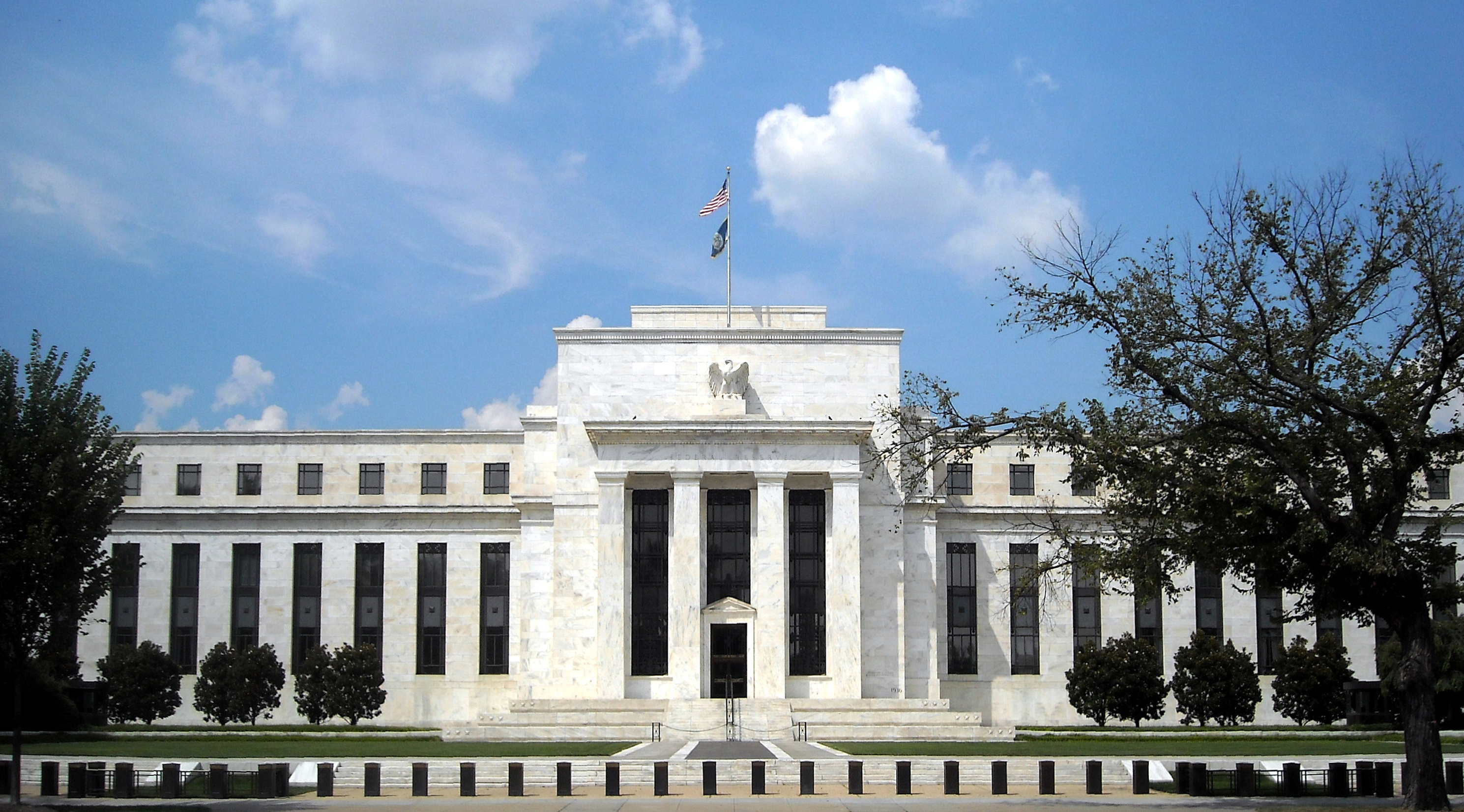
Calibration
In this year’s description of the global market shock, the Federal Reserve affirmed that the driving factor in determining the calibration of the GMS factor shocks is liquidity. When determining the time horizon for calibration, the FRB stated that the “horizons reflect the variation in the speed at which trading companies could reasonably close out or effectively hedge risk exposures in the event of market stress.” They further explained that the “calibration horizons are generally longer than the typical time needed to liquidate the assets under normal conditions because they are designed to capture the unpredictable liquidity conditions that prevail in times of stress….”
While this approach seems perfectly reasonable, the FRB goes on to explain that “…for example, changes within the more liquid markets, such as interest rates, foreign exchange and public equities are calibrated to shorter horizons, such as three months, while changes within less liquid markets, such as non-agency securitized products or private equity, have longer calibration horizons such as 12 months.”
We strongly believe that the calibration assumption for the more liquid products is counter to historical observation, market practice and decades of SEC opinions on asset liquidity risks. In our recent white paper, we point to overwhelming evidence both historical and statistical, which supports demonstration of liquidity for certain high-quality asset classes.
The FRB further justifies the extended time horizon for calibration by arguing that AAA-rated private label residential mortgage backed securities were likely judged by firms to be highly liquid prior to the recently financial crisis. While certain firms may have overestimated the liquidity of this assets class, we strongly disagree that a robust liquidity analysis would have concluded that this asset class would possess similar liquidity as UST treasuries and agencies, many corporate and equity positions and FX. Because the private label RMBS market was basically a post millennium product, where it represented only a fraction of the agency market until 2004, these securities did not have strong price discovery nor where they tested over any real economic cycles. This starkly contrasts to UST treasury and agencies, corporate bond and equity markets, and FX where there is strong price transparency, broad market acceptance and decades of observations. We urge the Federal Reserve to reconsider their calibration time horizon for liquid asset classes, so that assumptions reflect more plausible liquidity expectations.
The impact of overly severe calibration of the GMS factor shock also impacts the results of the Large Counterparty Default component of CCAR. The LCD’s estimate of counterparty default losses is based on the price moves reflected in the GMS shock. Consequently, this leads to a substantial overstatement of risk because of the time horizon implied by the GMS. This multi-month timeframe implicit in the GMS factor shock is generally well in excess of the time period, known as the margin period of risk (MPOR), to close out counterparty default exposures. To ensure a plausible LCD output, we believe it is incumbent on the Federal Reserve to consider the impact of the GMS calibration on the LCD and develop an alternative which better reflects market experience and is consistent with other regulatory requirements regarding MPOR.
Correlation
The enhanced disclosure did not discuss or rationalize the embedded correlation assumptions underlying the 2020 GMS factor shocks; however, it appears there is little linkage between asset class shocks despite the stated scenario. For example, the 2020 DV01 shock reflects a significant flight to quality, yet there is only a slight move in the GBP/USD spot rate, which is counterintuitive.
SIFMA’s GMS/LCD study found the correlation assumption employed in the CCAR program were overly harsh across all asset classes where it was generally assumed that all asset class experienced significant negative performance simultaneously often at historical or near historical levels. We urge the Federal Reserve to enhance the transparency around their correlation assumptions and rationalize an approach which assumes an almost worst-case scenario across all asset classes.
Individual Global Market Factor Shocks
Equity Shocks
The 2020 GMS shock for equity was more severe than 2019 by nearly 30%. This shock is greater than any one day move in market history, however it is comparable to the 10 day move experienced in 1987.
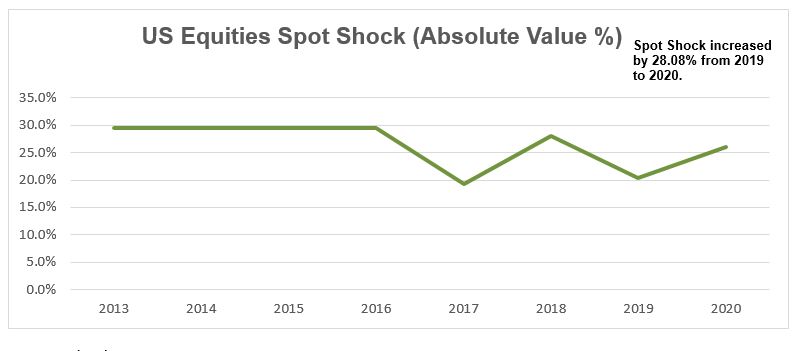
FX Spot Shocks
The FX spot shocks were significantly less severe in this cycle as CAD/USD, and EUR/USD shocks in the 2019 are among the largest in CCAR history, while GBP/USD was 2nd largest in CCAR History.
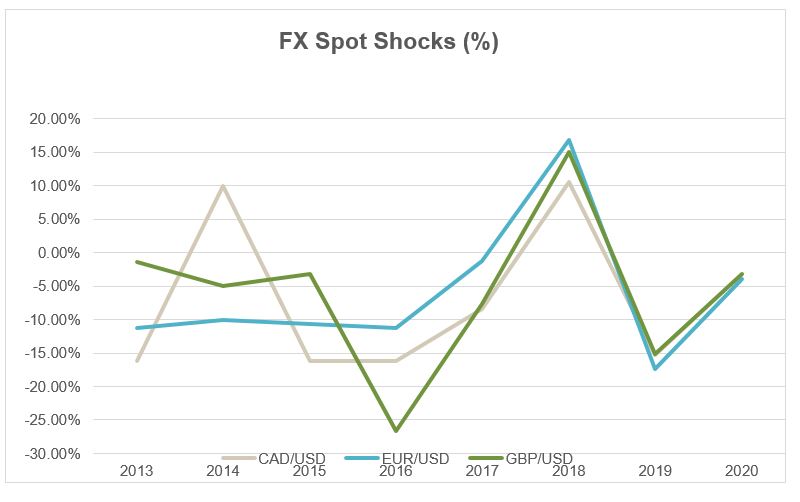
US Treasury Factor Shock
The 2020 GMS factor shocks for the two year and ten-year treasuries were 82.8% and 50.5% higher than 2019, respectively. Both factor shocks are in line (10Y) or greater (2Y) than the largest one day moves in history.
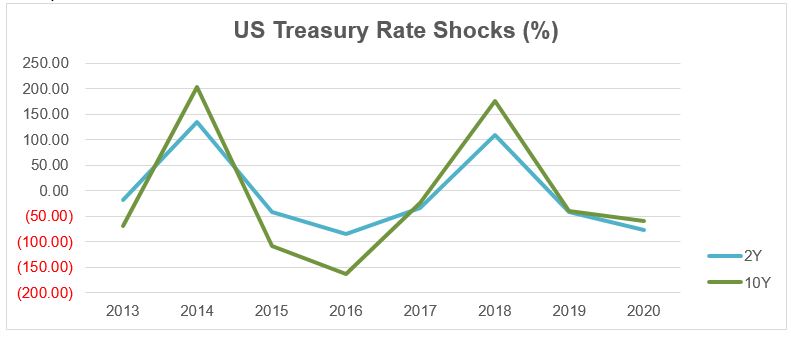
Securitized Products
The bright spot this year was the 58% reduction in the credit card ABS shock factor from 2019. On the other hand, Non-Agency Prime RMBS and Non-Agency CMBS were about 12% higher than 2019.
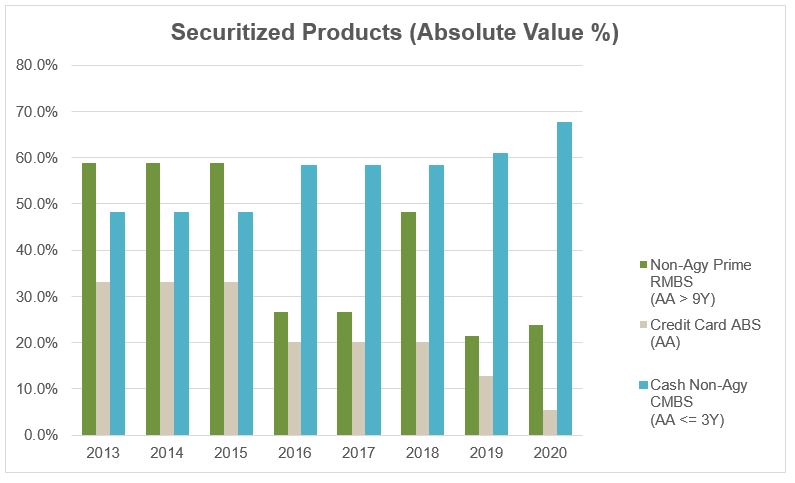
Corporates
The 2020 factor shocks for corporate credit were generally consistent with 2019. Importantly, A-rated and BBB rated corporate credit factor shocks are in line with the largest 10-day historical movements, however the factor shock for B rated corporates is more severe than even the largest 6-month historical movement.
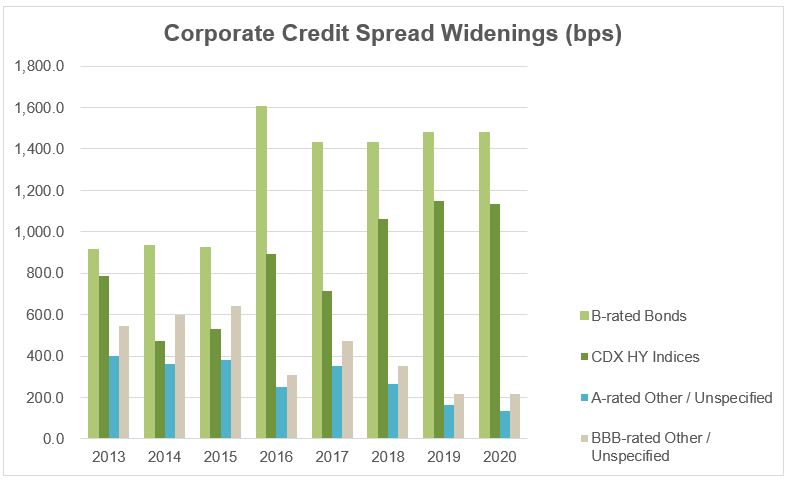
Post authored by Joseph L. Seidel, SIFMA’s Chief Operating Officer and Coryann Stefansson, SIFMA Managing Director and Head of Prudential Capital and Liquidity Policy.
Credit: SIFMA Research
- Director of Research: Katie Kolchin, CFA
- Senior Associate: Ali Mostafa
- Guy Bernhardt
[1] See BPI’s recent blog post for more detail https://bpi.com/the-feds-stress-scenario-remains-very-severe-and-it-is-tougher-than-last-years-test/
[2] Published 2/6/2020 https://www.federalreserve.gov/newsevents/pressreleases/files/bcreg20200206a1.pdf and 2/10/2020 https://www.federalreserve.gov/supervisionreg/ccar-2020.htm
[3] https://www.sifma.org/resources/submissions/global-market-shock-and-large-counterparty-default-study/